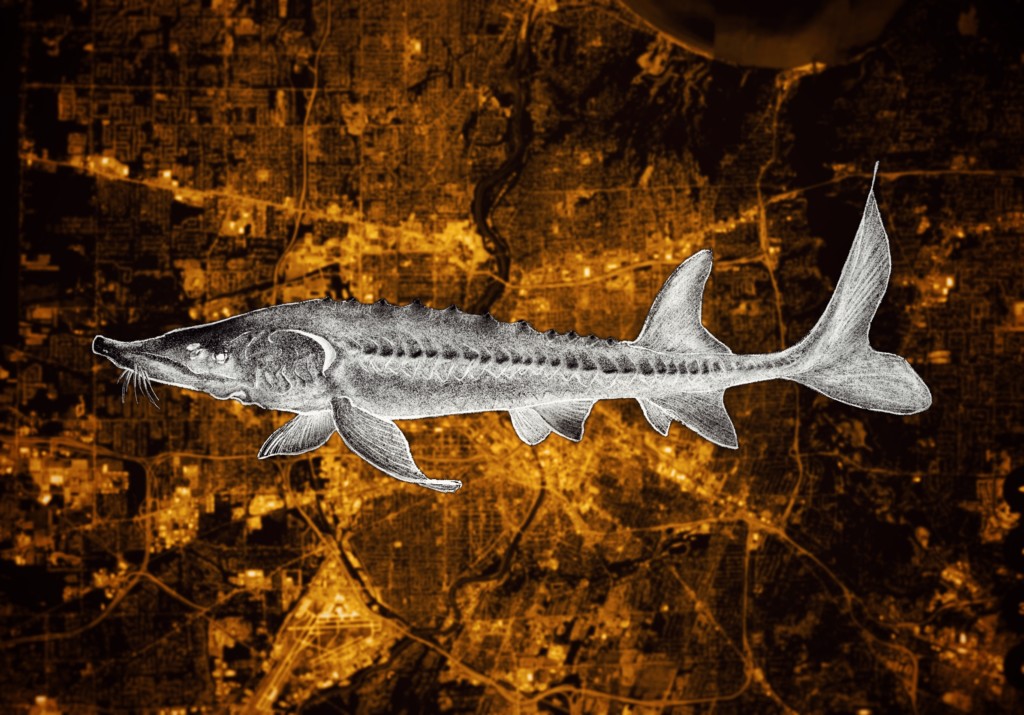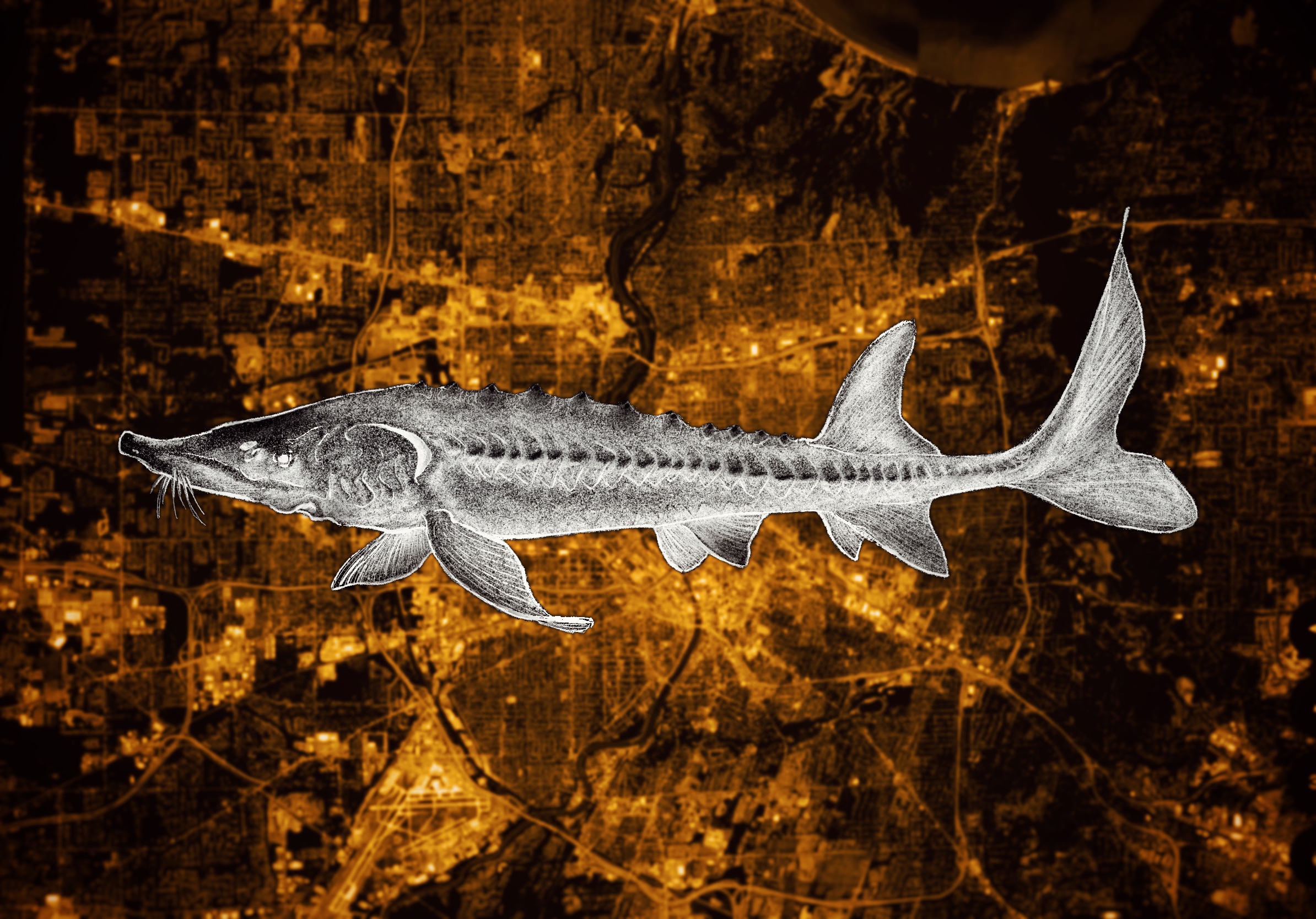Lake sturgeon have called the Great Lakes home for 10,000 years. The lake sturgeon’s roots go back 200 million years, when their prehistoric ancestors lived among the dinosaurs. In addition to being the area’s oldest fish, the lake sturgeon is also the largest, measuring up to six feet in length. The lake sturgeon has an unfortunate modern history, however. The fish is considered a threatened species in the state of New York, and this issue hits us at home in the Genesee River — right in our very backyard. Efforts have been made in the past year that raise hope of a new beginning, but what caused its decline in the first place?
Looking at commercial harvest data is the best way to answer this question. In the early 1800s, fishermen saw the lake sturgeon as a nuisance, as they often destroyed fishing gear, so they were widely killed as a result. In the 19th century, their meat and eggs became prized goods, and this led to targeted fishing, further driving population decline in the 1900s. This commercialization was the leading cause behind their decline, including other harmful factors like the construction of dams that restricted access to spawning areas. Lake sturgeon went extinct in the Genesee River in the 1980s, and at the turn of the 21st century, 80 percent of Lake Erie’s original lake sturgeon population had been eradicated.
Lake sturgeon are benthic feeders, which serve as an important link in energy and matter flow between pelagic and benthic parts of the ecosystem. Their role is essential in highly eutrophicated water bodies, where they control phytoplankton biomass. So the lake sturgeon’s presence is a sign of a balanced ecosystem with biodiversity.
Fortunately, recent efforts aim to restore the lake sturgeon’s population in the Rochester area. In the past fall, 1,000 young lake sturgeon were released into the Genesee River, near where it meets Lake Ontario. The hope is that these young lake sturgeon will help start a thriving population.
Interest in keeping these magnificent creatures around goes back longer than one might think. Indigenous communities like the Huron people have always revered the lake sturgeon. First Nation communities have seen the animal as spiritual and social guides, for they play a mystical role in tales and gather community members together.
So keep an eye out when going for a walk, jog, or bike ride along the river. You might spot one of those thousand young lake sturgeon, striking in their primitive appearance.


